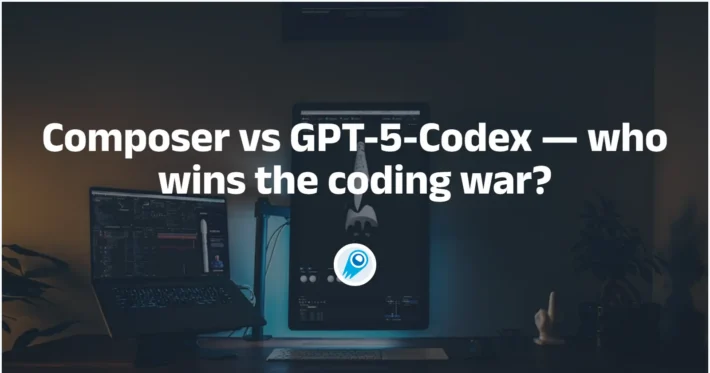GPT-5-Codex is a specialized variant of OpenAI’s GPT-5 family designed for complex software engineering workflows: coding, large-scale refactoring, long multi-step agentic tasks, and extended autonomous runs inside the Codex environment (CLI, IDE extension, and cloud). It is positioned as the default model for OpenAI’s Codex product and is accessible via the Responses API and Codex subscriptions.
Key features
- Agentic optimization — tuned to run inside agent loops and tool-driven workflows (better consistency when using tools/CLIs). Agentic and tool usage are first-class.
- Code quality focus — produces cleaner, more steerable code for refactoring, review, and long-running development tasks.
- IDE & product integration — integrated into developer products (e.g., GitHub Copilot preview rollouts) and OpenAI’s Codex SDK/CLI.
- Responses API only — uses the newer Responses API pattern (token reuse, agent loop support) for best results; legacy Completion calls can underperform on Codex tasks.
Technical details — training & architecture
- Base lineage: GPT-5-Codex is a derivative of GPT-5, built by further tuning the GPT-5 snapshot for coding tasks and agent behaviors. Model internals (exact parameter count, training compute) are not publicly enumerated; OpenAI publishes capabilities and tuning approach rather than raw parameter counts.
- Training focus: emphasis on real-world software engineering corpora, interactive agent traces, tool-use trajectories, and instruction tuning to improve steerability and long-horizon correctness.
- Tool & agent loop tuning: prompt and tool definitions were adjusted so the Codex agent loop runs faster and yields more accurate multi-step outcomes when compared to a vanilla GPT-5 in comparable setups.
Benchmark performance
Public benchmarking from independent reviewers and aggregator sites shows GPT-5-Codex leading or near-leading on modern coding benchmarks:
- SWE-Bench (real-world coding tasks): independent summary reports ~≈77% success on a 500-task suite (reported in a third-party review). This was noted as slightly above the general-purpose GPT-5 (high) baseline in that review.
- LiveCodeBench / other code benchmarks: aggregator sites report high relative performance (examples include LiveCodeBench scores in the mid-80s for certain tasks).
Model versioning & availability
Availability channels: Responses API (model id gpt-5-codex)
gpt-5-codex-low/medium/high – Specialized for coding & software engineering:
- gpt-5-codex-low
- gpt-5-codex-medium
- gpt-5-codex-high
Support /v1/responses format call
Limitations
- Latency & compute: agentic workflows can be compute-intensive and sometimes slower than lighter models, particularly when the model runs test suites or performs extensive static analysis.
- Hallucination & overconfidence: despite improvements, GPT-5-Codex can still hallucinate APIs, file paths, or test coverage—users must validate generated code and CI outputs.
- Context length & state: while the model is tuned for longer sessions, it remains bounded by practical context/attention limits; extremely large codebases require chunking, retrieval augmentation, or tool-assisted memory.
- Safety & security: automated code changes can introduce security regressions or license violations; human oversight and secure CI gating are mandatory.
Use cases
- Automated code review — produce reviewer comments, identify regressions, and suggest fixes.
- Feature development & refactoring — large multi-file edits with tests run by the model and CI validation.
- Test synthesis & TDD automation — generate unit/integration tests and iterate until passing.
- Developer assistants & agents — integrated into IDE plugins, CI pipelines, or autonomous agents to carry out complex engineering tasks.
How to call gpt-5-codex
gpt-5-codexgpt-5-codex
gpt-5-codex| Input Tokens | $1 |
|---|---|
| Output Tokens | $8 |
Required Steps
- Log in to cometapi.com. If you are not our user yet, please register first
- Get the access credential API key of the interface. Click “Add Token” at the API token in the personal center, get the token key: sk-xxxxx and submit.
- Get the url of this site: https://api.cometapi.com/
Use Method
- Select the “
gpt-5-codex” endpoint to send the API request and set the request body. The request method and request body are obtained from our website API doc. Our website also provides Apifox test for your convenience. - Replace <YOUR_API_KEY> with your actual CometAPI key from your account.
- Insert your question or request into the content field—this is what the model will respond to.
- . Process the API response to get the generated answer.
CometAPI provides a fully compatible REST API—for seamless migration. Key details to API doc:
- Core Parameters:
prompt,max_tokens_to_sample,temperature,stop_sequences - Endpoint: https://api.cometapi.com/v1/responses
- Model Parameter:
gpt-5-codex - Authentication:
Bearer YOUR_CometAPI_API_KEY - Content-Type:
application/json.
See also GPT-5 Pro




